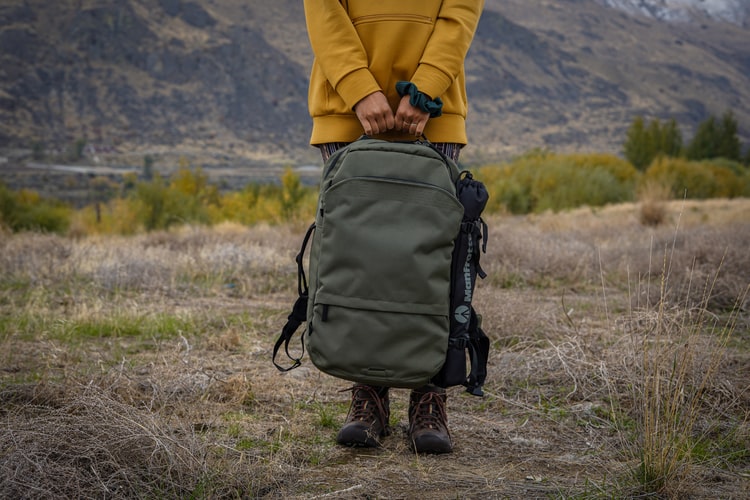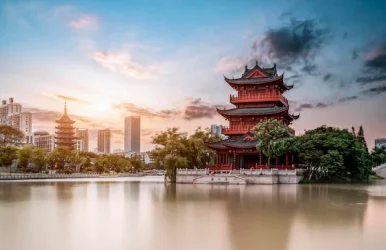A Magical Journey Through Beijing: Unveiling The Heart Of China
BY Abdul Aziz Dec 8, 2023
Nestled in the heart of China and the Middle Kingdom, Beijing, the capital city, is where ancient traditions seamlessly merge with modern innovations. As you embark on this enchanting journey, you'll find yourself immersed in a rich tapestry of history, culture, and vibrant urban life. Before you pack your bags, let's delve into the essential details, starting with the visa requirements for a seamless entry into this fascinating city. Visa to China: To unlock the door to Beijing's wonders, a valid visa to China is a must. Whether you're planning a short stay or a more extended exploration, the process is relatively straightforward. 1. **Tourist Visa (L Visa):** This is the most common visa for travelers. It's suitable for those planning leisure trips, family visits, or short-term business engagements. To apply, you'll need a passport valid for at least six months, a completed visa application form, passport-sized photos, a flight itinerary, hotel reservations, and proof of financial means to cover your stay. 2. **Business Visa (M Visa):** If your visit is work-related, you'll need a business visa. Along with the basic requirements for a tourist visa, you must provide an invitation letter from a Chinese business or a letter of confirmation from your employer detailing the purpose and duration of your trip. 3. **Transit Visa (G Visa):** For those stopping over in Beijing en route to another destination, a transit visa is necessary. Ensure you have a confirmed onward ticket and comply with the maximum allowed stay. Be sure to check the latest requirements and processing times at the Chinese embassy or consulate in your country before making any travel arrangements. Explore The Heart Of China: Beijing Now that the bureaucratic details are sorted, let’s embark on a journey through the heart of Beijing. The city is known for its history, beauty, and culture. So, if you are planning a tour to Beijing, check out the list given below: Historical Marvels: Beijing's history spans three millennia, and the city is a living testament to China's imperial past. Start your exploration at the iconic Forbidden City, a UNESCO World Heritage site that served as the imperial palace for centuries. As you wander through its labyrinthine courtyards and majestic halls, you'll sense the echoes of emperors and concubines from a bygone era. From there, venture to the Temple of Heaven, a masterpiece of Ming dynasty architecture. This spiritual sanctuary was where emperors once conducted rituals to ensure a good harvest, and today, it offers a serene escape from the urban bustle. The Great Wall of China, an hour's drive from the city, is a must-visit. Stretching over 13,000 miles, this colossal fortification is a testament to ancient engineering prowess. Hike along its winding paths and witness panoramic views of the surrounding landscapes. Thus, the memory will stay with you forever. Cultural Gems: Immerse yourself in the heart of China. Beijing's vibrant cultural scene by exploring its hutongs, narrow alleys that weave through traditional courtyard homes. These hidden gems offer a glimpse into local life, where you can interact with residents, savor authentic street food, and witness traditional arts and crafts. The 798 Art District, a thriving hub of contemporary art, showcases Beijing's modern face. Formerly an industrial area, it has been transformed into a haven for artists and creatives. Explore galleries, studios, and street art that reflect the city's dynamic spirit. For a taste of traditional Chinese performing arts, attend a Peking Opera or Kunqu Opera performance. The intricate costumes, stylized movements, and distinctive music create a mesmerizing experience that bridges the gap between past and present. Culinary Delights: No journey to Beijing is complete without savoring its diverse culinary offerings. Begin your gastronomic adventure with Peking Duck, a world-renowned dish that originated in the imperial kitchens. Crispy skin, succulent meat, and thin pancakes create a symphony of flavors that will tantalize your taste buds. Wander through the Wangfujing Snack Street for a feast of local delicacies. From scorpion skewers to traditional baozi (steamed buns), this bustling market is a food lover's paradise. Modern Marvels: As night falls, witness Beijing's transformation into a modern metropolis. The city's skyline is adorned with architectural marvels like the CCTV Headquarters and the National Stadium. Fondly popular as the Bird's Nest. Join the locals in a leisurely stroll around Houhai Lake or revel in the neon-lit excitement of Sanlitun, known for its vibrant nightlife. As you explore the city's contemporary side, don't miss the futuristic Galaxy SOHO, designed by the renowned architect Zaha Hadid. Its interconnected, flowing structures redefine modern urban design and offer a stark contrast to the historical landmarks that punctuate the cityscape. Breathtaking Sights To See: We are diving deeper into the article, which allows me to share some breathtaking sights in Beijing with you. Firstly, you must check out Tian’anmen Square, which is also known as the Forbidden City. Moving forward comes the National Museum of China, which is a great place to collect the cultural history of the country. If you have a religious side of yours, head over to the northern tip of Beijing. The Temple of Heaven never fails to amaze anyone. It is also a significant place of religious worship, and emperors from the Qing Dynasty also visited it. Ending the list with the National Palace Museum and The Bund. While the former is just a ride away from Beijing, the latter is a waterfront location in North Beijing. Both have mesmerizing views, and you will have a hell lot of picturesque destinations. Conclusion: Beijing, the heart of China, has a fusion of history and modernity. It never fails to captivate the senses and beckons travelers to uncover its secrets. From the grandeur of the Forbidden City to the vibrant pulse of contemporary life, this city is a kaleidoscope of experiences. Before you bid farewell to this enchanting capital, take a moment to reflect on the timeless beauty. Also, the cultural richness that defines Beijing is worth applauding for. With a heart full of memories and a passport stamped with the essence of China, you'll leave knowing that the Middle Kingdom has woven its magic into your soul. Read Also: Chinese And US Presidents Have Come To A Common Ground Regarding Tourism Facilitation! Indian Students Stranded At Home At Ease After China Relaxes Ban On Visa UK City Hidden Gems: Things To Do In Manchester














